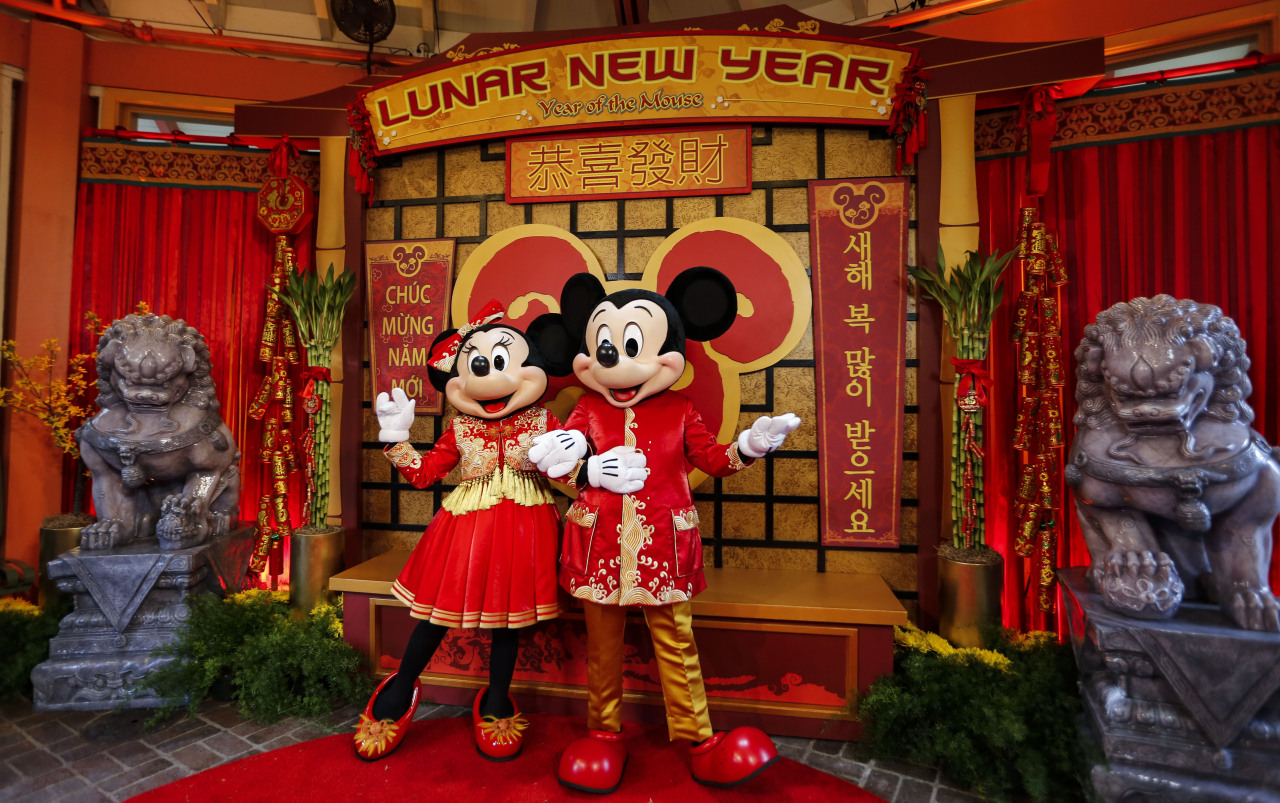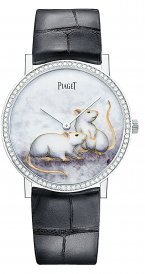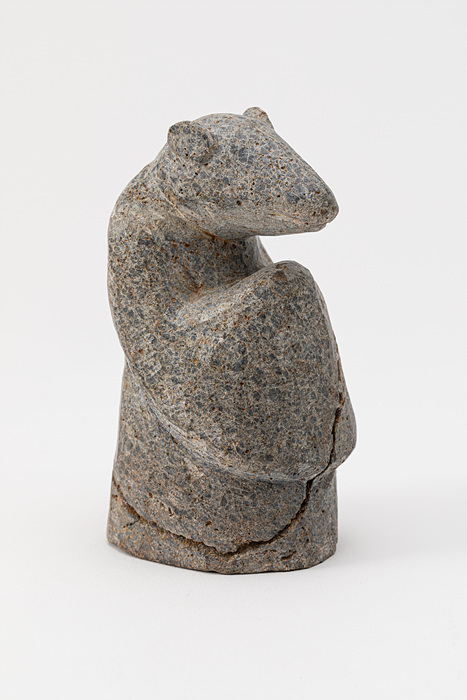 |
People visit a folk lantern festival at the Yuyuan Garden in Shanghai, Jan. 20, 2020. (Xinhua-Yonhap) |
Though we are well into the new year, the Year of the White Mouse truly begins with the Lunar New Year’s holiday.
With Lunar New Year’s Day falling Saturday, South Korea slips into a holiday mood from Friday through Monday.
According to the Chinese zodiac, there are 10 characters that symbolize the energy of the sky and 12 animals responsible for guarding the land. This year, the seventh character, Gyeong, meets the mouse guardian. Gyeong symbolizes the color white, making 2020 the Year of the White Mouse (also often translated as the Year of the White Rat).
 |
Mickey and Minnie Mouse pose for photos in traditional Chinese costume during a Lunar New Year celebration at Disney’s California Adventure Park in Anaheim, California, Jan. 17, 2020. (Xinhua-Yonhap) |
The mouse (or rat) is the first animal in the zodiac, guarding the north and in charge of the hours from 11 p.m. to 1 a.m.
Though humans have a tendency to dislike mice and rats, in folklore the white mouse is the smartest of all -- smart enough to see the essence of everything -- and is good at adapting to different conditions in order to survive.
Ancient tales depict the Year of the Mouse as a time of abundance, fertility, hope and opportunity. Some ancient fortunetelling books say those born in the Year of the Mouse are born with great fortune, as they are good at managing human relationships.
In Korea, like most other parts of the world, rodents such as mice and rats have come to be associated with unsanitary environments. In the late 20th century, rats were almost a national enemy, and the government conducted exhaustive campaigns to eradicate them.
Households competed to kill rats with poisons and traps. Upon taking a rat’s tail to school or a municipal office, one was rewarded with a pencil or a lottery ticket.
Over time, rats gradually disappeared from sight as cities became concrete jungles and people became more aware of hygiene.
In recent years, mice have evolved into beloved animated characters such as Mickey Mouse, Jerry from “Tom and Jerry,” the French food connoisseur rat Ratatouille and more. The change in our perceptions of our rodent friends have even led luxury fashion brands to celebrate the Chinese Lunar New Year with rat-inspired products.
 |
Gucci’s Mickey Mouse collaboration with Walt Disney (Gucci) |
To court the Asian market, including Korea, China and Japan, global fashion houses are offering a wide range of white mouse-themed merchandise from watches and bags to shoes and clothes.
High-end watch brands such as Piaget, Chopard and Breguet have all rolled out wristwatches featuring images of beautiful white mice or rats on the watch face. Gucci and sports apparel brand MLB Korea collaborated with Walt Disney to put Mickey Mouse on their fashion items.
 |
Swiss luxury watchmaker Piaget has rolled out a limited-edition Piaget Altiplano inspired by white rats. (Piaget) |
The National Folk Museum of Korea in central Seoul is holding a special exhibition titled “Even a Rat Has Its Day.”
In celebration of the Year of the Mouse, the exhibition looks at the meaning of these small yet intelligent creatures, showing 60 rat and mouse artifacts. One of the highlights is a statue made with pagodite, a type of stone used to carve stone pagodas.
 |
A statue with the head of a rat and the body of a human (National Folk Museum of Korea) |
The museum also looks at how representations of mice and rats have evolved over time -- for example, in animations such as “Tom and Jerry” and “Ghost Mecard.”
The exhibition runs until March 1. More information is available in English from the museum’s official website at www.nfm.go.kr/english/index.do.
By Im Eun-byel (
silverstar@heraldcorp.com)









![[Weekender] Korea's traditional sauce culture gains global recognition](http://res.heraldm.com/phpwas/restmb_idxmake.php?idx=644&simg=/content/image/2024/11/21/20241121050153_0.jpg)


